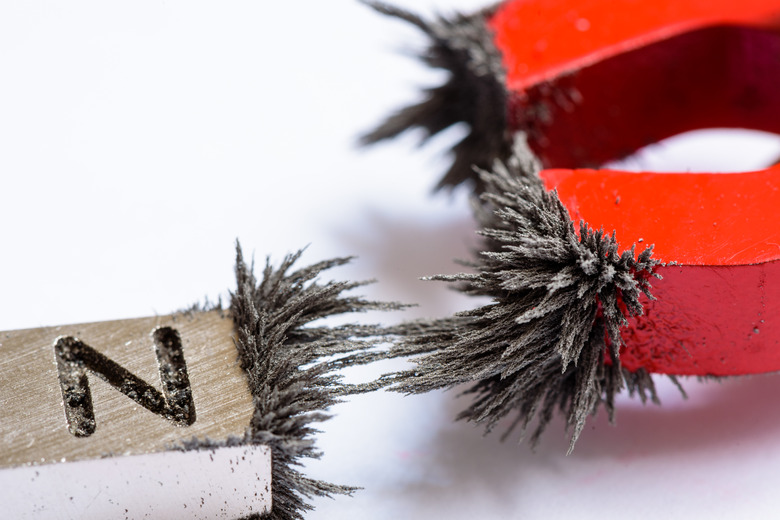Facts About Magnets
Magnets are objects that produce magnetic fields. There are only a few materials on earth that produce their own magnetic fields. However, there are some materials such as iron, that can be manipulated to produce their own magnetic fields.
Uses
Uses
Magnetic materials have several applications. VHS tapes and audio cassettes encode information on magnetic coatings, as do floppy disks. The magnetic strip on the backs of credit cards stores contact information on the owner's account. Electromagnets are even used in computer monitors and cathode ray tube televisions.
Facts
Facts
Each magnet has two poles, a north pole and a south pole. Most of the strength of a magnet is found in its poles. If a magnet were to break, neither of its poles would become isolated; a new north pole and south pole would be formed automatically.
History
History
Magnets have been around for centuries. Lodestones were what the first magnets were called. Lode means lead; people used the stones to magnetize compass needles. The discovery of magnetite and the fact that it attracted iron was a cornerstone in the realization of the potential of magnets. The most famous legend of the discovery of the magnet regarded an old shepherd named Magnes. As the story is told, Magnes was herding his sheep one day when the nails in his shoe and the tip of his cane got stuck to the large rock he was standing on. He got stuck to lodestone, which contains magnetite.
Ferromagnets
Ferromagnets
Ferromagnets are substances that can be magnetized. These materials, such as iron and nickel, are already heavily attracted to magnets. Materials such as iron and nickel can be magnetized in several ways. They can be heated to certain temperatures, cooled in magnetic fields and hammered. Also, they can be placed in an external magnetic field, which will cause the material to retain some level of magnetism.
Electromagnets
Electromagnets
The use of electromagnets is widespread. Electromagnets are made up of an arrangement of wire coils; often, the wire is wound around a ferromagnetic substance such as steel, which makes the magnetic field from the coil more powerful. Electromagnets only act like magnets when electric currents run through their coils. These coils act like a magnet when their supply of electric current is cut.
References
Cite This Article
MLA
Leone, Jay. "Facts About Magnets" sciencing.com, https://www.sciencing.com/magnets-5420654/. 16 September 2009.
APA
Leone, Jay. (2009, September 16). Facts About Magnets. sciencing.com. Retrieved from https://www.sciencing.com/magnets-5420654/
Chicago
Leone, Jay. Facts About Magnets last modified March 24, 2022. https://www.sciencing.com/magnets-5420654/
